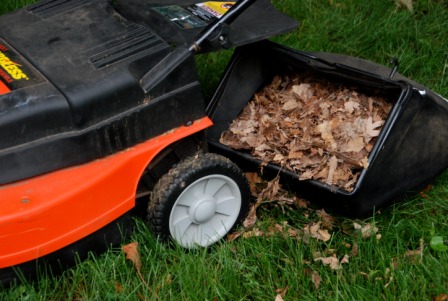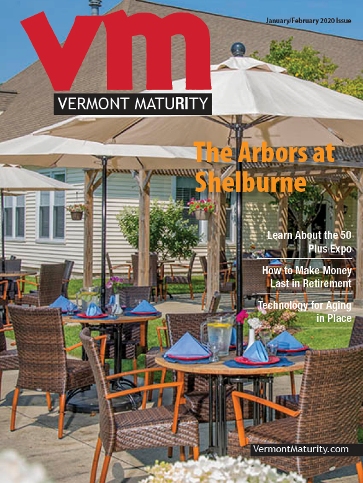Raking fall leaves can seem like a chore and a never-ending one, at that. Reduce time and effort spent managing fall leaves by putting this valuable resource to work in your landscape.

Use your mower to recycle leaves right where they fall. As you mow the grass, you’ll shred the leaves into smaller pieces. If they are the size of a quarter or smaller, your lawn will be fine. As these leaf pieces decompose, they add organic matter and nutrients to the soil.
Another option is to attach a bagger to shred and collect the leaves with every pass of the mower. Only use grass clippings collected from lawns that have not been treated with a weed killer this fall. Or burn a few extra calories and rake the leaves into a pile. Shred with a leaf shredder or mower and spread them over the soil surface around perennials. Leaf mulch helps insulate plant roots, conserve moisture, suppress weeds and improve the soil as it breaks down.
Bag shredded leaves you want to save for next season. Tuck them out of sight for the winter under trees or around the foundation of your house for added insulation.
Dig extra shredded leaves into vacant annual flower and vegetable gardens or incorporate them into the soil as you prepare new planting beds. They will break down over winter, improving the drainage in heavy clay soils and the water-holding ability in fast-draining soils.
Create compost with shredded leaves and other landscape trimmings. Do not use meat, bones or dairy that can attract rodents. Avoid diseased, insect-infested trimmings and weeds that can survive in compost piles that don’t produce enough heat to kill these unwanted pests.
Start with a compost pile that’s at least three feet high and wide for efficient decomposition. Place a mixture of shredded fall leaves, grass clippings free of herbicides, vegetable scraps and other landscape trimmings in an 8- to 10-inch layer. Cover with compost and sprinkle with a low nitrogen, slow release fertilizer.
Repeat the layers until the pile is the desired height. Then moisten until it’s the consistency of a damp sponge. Turn the pile occasionally, moving the material in the center to the outer edge and the less decomposed trimmings to the hotter center. It’s a great workout and speeds decomposition. Or pile the materials in a heap and let nature do the work; it just takes longer.
Oak and large maple leaves both make great mulches and additions to the compost pile but are slow to break down. Shred them with your mower or leaf shredder first for better results. Avoid black walnut leaves that contain juglone, a compound which is toxic to many plants. Once the leaves are fully decomposed the compost is safe to use.
As you begin putting fall leaves to work in your landscape, you’ll start considering them a gift versus a curse from nature especially as you see the results of your efforts – a more beautiful landscape.
Melinda Myers has written numerous books and hosts How to Grow Anything DVD series and the nationally-syndicated Melinda’s Garden Moment TV & radio program. Her web site is MelindaMyers.com.
Related Articles & Free Subscription

Bold and Beautiful Alliums for Every Garden
Flower Bed Maintenance Keeps Gardens Looking Their Best All Summer Long






Comment here